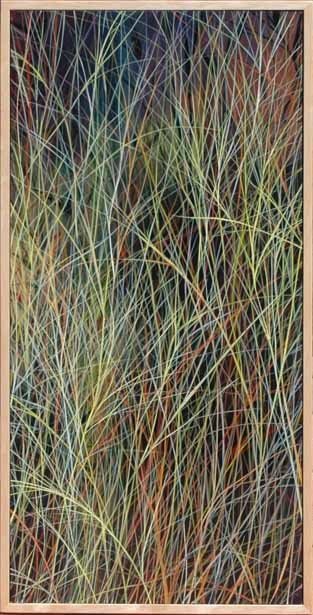 |
| "furrow" work on paper 14" x 20" 2011 |
 |
| "Furrow" painting 33" x 46" 2011 |
 |
| "To Turn My Face Away" painting 33" x 46" 2010 |
 |
| "Zurich" work on paper 12" x 16" 2010 |
 |
| "Be Lost In Me" painting 50" x 66" 2009 |
Mark Thompson is a British born artist who has an intense fascination with wintry landscapes. The kind of environment he depicts is one that compels most people to retreat indoors. Some people must brave the elements out of necessity. But others, like the artist I imagine, are compelled to immerse themselves in it by choice. Such people do so, in part, precisely because others do not. They relish the isolation, the profound and invigorating lonesomeness that suffuses such an experience. There is an intensity of awareness being out in harsh elements. One can feel exquisitely alive in conditions that are not conducive to survival. One is confronted directly with the exigencies of life, the need for shelter, for warmth. Mr Thompson's works are not meant to record particular moments but rather sum up the memories of numerous occasions. His expressionistic rendering of atmosphere and snow create a sharp contrast to his careful architectural rendering serving to point out the difference between man's needs and the whims of environment. They remind me of some of the late
winter scenes by Maurice Vlaminck, but he has pursued the subject matter more thoroughly, more relentlessly, developing a style in the very vernacular of winter.
There is lots more to see at his website:
www.markthompson-artist.com
I came across his work at the affordable art fair in Seattle last weekend, where his work was represented by
www.ggibsongallery.com






































